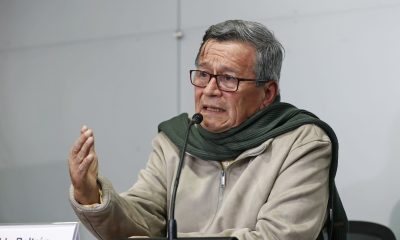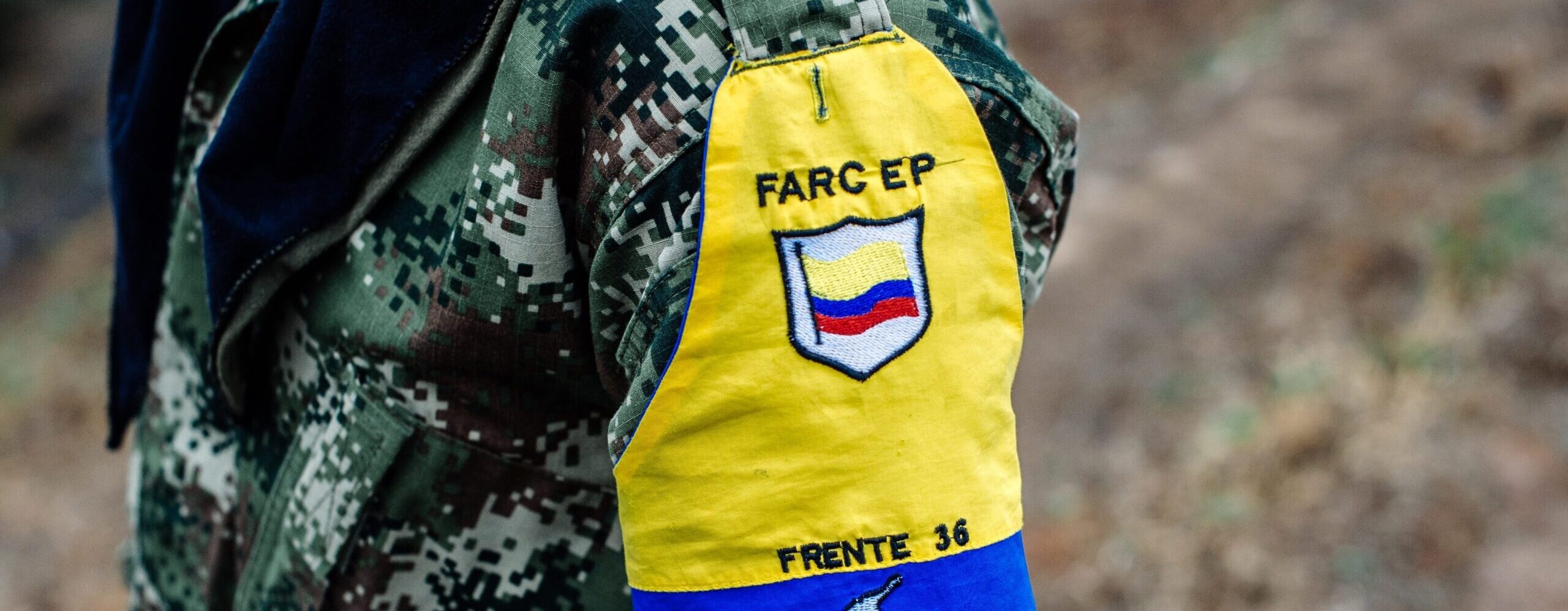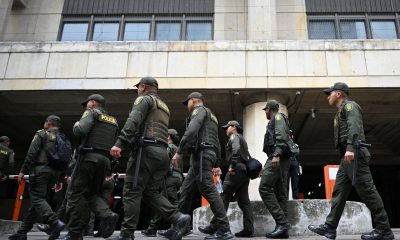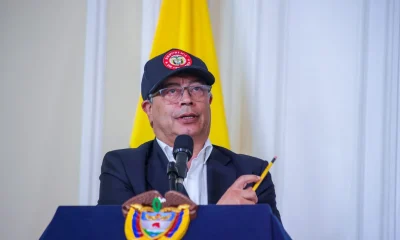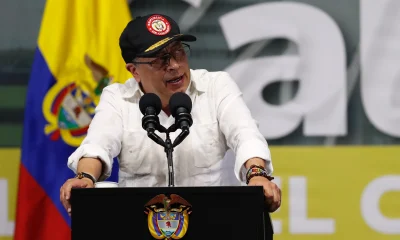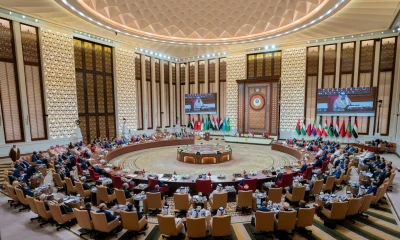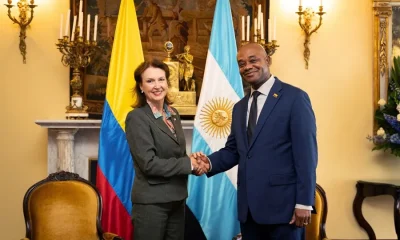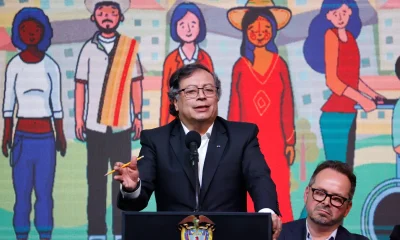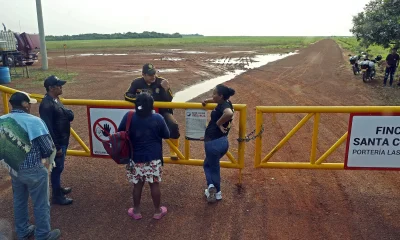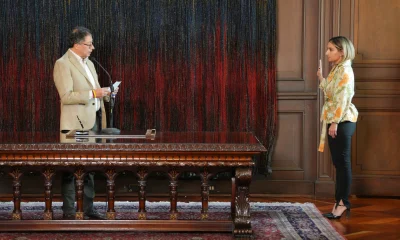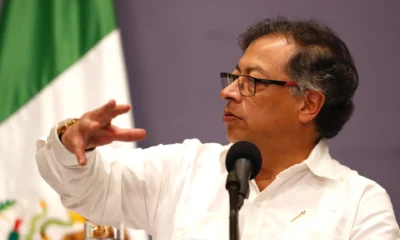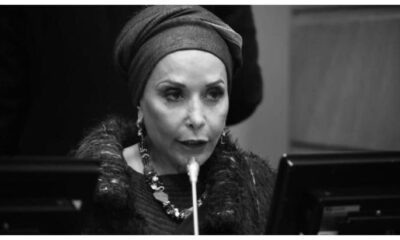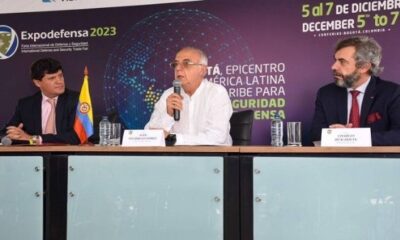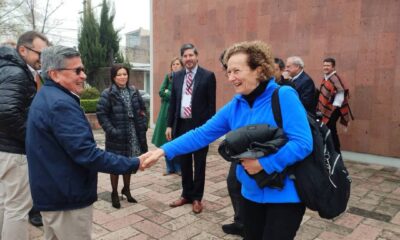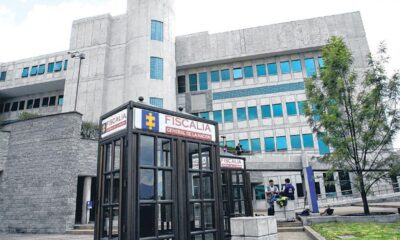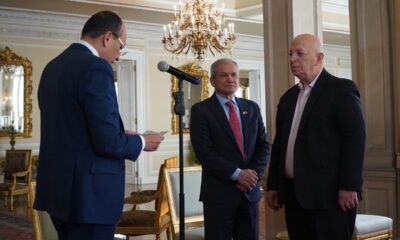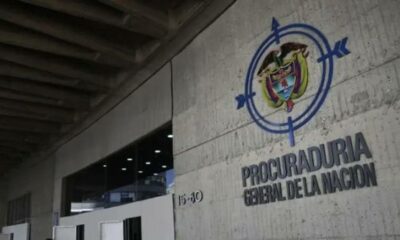International
Colombia’s crusade to repatriate its archeological heritage
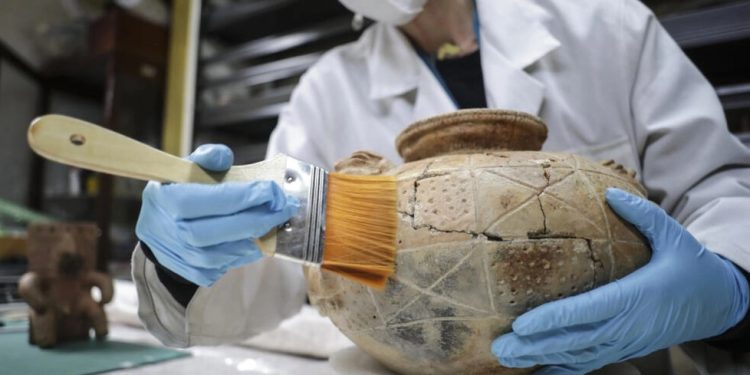
November 5 |
Wearing latex gloves and a white coat, restorer Carla Medina holds part of Colombia’s history in her hands. A growing number of pre-Columbian pieces are returning from abroad in an unorthodox way: President Gustavo Petro himself is bringing them back.
“It’s a great responsibility and a great privilege,” he tells AFP in his laboratory at the Colombian Institute of Anthropology and History (ICANH).
Medina, 41, analyzes a clay vessel repatriated from Italy, which had to be reconstructed from fragments. She is grateful “to have the opportunity to have access to an object that has so many years of history”.
At least 560 pre-Columbian pieces were returned from other countries aboard the presidential plane of leftist Gustavo Petro, in some of the more than 30 trips abroad that he has completed in just over a year in office. International tours criticized by the opposition as dispensable and costly.
Most of the pieces returned from the United States, United Kingdom, Belgium, Spain, Germany, Mexico, among other countries, in a coordinated work between the Foreign Ministry and ICANH.
One of the most recent returns was in October and took place on the diplomatic vessel Gloria, where 12 archeological pieces traveled from Costa Rica to Cartagena.
The recovery is part of a strategy of “efficient use of resources”, said at the time the former vice-minister of Multilateral Affairs, Laura Gil, and is advancing at an accelerated pace compared to the previous government, in which only 18 pieces were repatriated in four years.
For Catalina Ceballos, director of cultural affairs at the Foreign Ministry, it is a way to “start talking about decolonization from another perspective.”
Most of the pieces returned to Colombia were taken out of the country when there was no legal clarity in the world on the traffic of archaeological goods.
Only since 1997 has Colombian law recognized the State as the legitimate owner of national archaeological heritage.
However, the fight against illegal trafficking of these pieces has not been a priority in a country bled by half a century of armed conflict between authorities, guerrillas, paramilitaries and criminal gangs. While the budget suggested by the Presidency for ICANH in 2024 is equivalent to some 2.3 million dollars, that proposed for the defense area and the Police is almost 600 times greater.
Juan Pablo Ospina, coordinator of the anthropology group at ICANH, nevertheless emphasizes that in the current government repatriations have been “successful” because the presidential plane has been “fully available” to bring pieces “properly packed and safeguarded on those trips”.
Recent returns have been made mostly by private collectors on a voluntary basis and require diplomatic work in each country of origin. ICANH is then in charge of the registration, cataloguing, transfer, reception and, in some cases, intervention of the pieces.
As most of the repatriated works are ceramic, the restoration processes are simpler. “Even though they are very old, they can be very well preserved with the passage of time,” says Medina.
The most vulnerable materials are those “of an organic nature,” such as textiles, paper or wood.
The composition of the materials also offers details about how Colombia’s early societies functioned in relation to their territory, says Medina.
For the most part, the Colombian territory was made up of pre-Columbian societies distributed in small chiefdoms.
Ospina assures that what today corresponds to Panama, Venezuela, Colombia and part of northern Ecuador is known as the “intermediate zone” in Latin American archeology, “because what happened there is completely different from what happened in Mesoamerica or in the central Andes,” where great empires were formed.
That is why in Colombia, unlike in Mexico or Peru, it is not common to find palaces, pyramids or large goldsmith traces, with one great exception: the treasure of the Quimbayas. A collection of gold found at the end of the 19th century in a small village in the department of Quindío (west), donated at that time to the Queen of Spain by the Colombian president Carlos Holguín and which today is in the Museum of America in Madrid.
Most of Colombia’s archaeological treasures are ceramic pieces from different periods and cultures, some 6,000 and 7,000 years old, found in the Caribbean, Ospina explains.
“They are very early evidence of ceramics,” he adds.
In other Colombian regions the use of ceramics dates back to approximately 1,000 BC, present mainly in religious and funerary rites.
International
U.S. and Mexico Reach Deal to Address Water Deficit Under 1944 Treaty
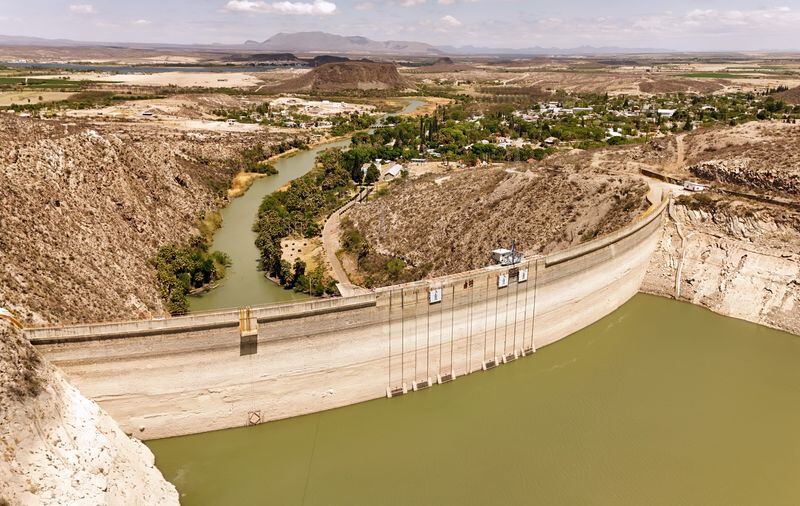
The United States and Mexico have reached an agreement to comply with current water obligations affecting U.S. farmers and ranchers and for Mexico to cover its water deficit to Texas under the 1944 Water Treaty, the U.S. Department of Agriculture said in a statement.
The department уточified that the agreement applies to both the current cycle and the water deficit from the previous cycle.
On Monday, U.S. President Donald Trump accused Mexico of failing to comply with the water-sharing treaty between the two countries, which requires the United States to deliver 1.85 billion cubic meters of water from the Colorado River, while Mexico must supply 432 million cubic meters from the Rio Grande.
Mexico is behind on its commitments. According to Washington, the country has accumulated a deficit of more than one billion cubic meters of water over the past five years.
“This violation is severely harming our beautiful crops and our livestock in Texas,” Trump wrote on Monday.
The Department of Agriculture said on Friday that Mexico had agreed to supply 250 million cubic meters of water starting next week and to work toward closing the shortfall.
Agriculture Secretary Brooke Rollins, quoted in the statement, said Mexico delivered more water in a single year than it had over the previous four years combined.
Trump has said that if Mexico continues to fall short of its obligations, the United States reserves the right to impose 5% tariffs on imported Mexican products.
Mexico’s Deputy Foreign Minister for North America, Roberto Velasco, said that a severe drought in 2022 and 2023prevented the country from meeting its commitments.
International
Several people shot in attack on Brown University campus

Several people were shot on Saturday in an attack on the campus of Brown University, in the northeastern United States, local police reported.
“Shelter in place and avoid the area until further notice,” the Providence Police Department urged in a post on X. Brown University is located in Providence, the capital of the state of Rhode Island.
U.S. President Donald Trump said on his social media platform Truth Social that he had been briefed on the situation and that the FBI was on the scene.
At 5:52 p.m. local time (11:52 p.m. GMT), Brown University said the situation was still “ongoing” and instructed students to remain sheltered until further notice.
After initially stating that the suspect had been taken into custody, Trump later posted a second message clarifying that local police had walked back that information. “The suspect has NOT been apprehended,” the U.S. president said.
International
Colombia says it would not reject Maduro asylum request as regional tensions escalate
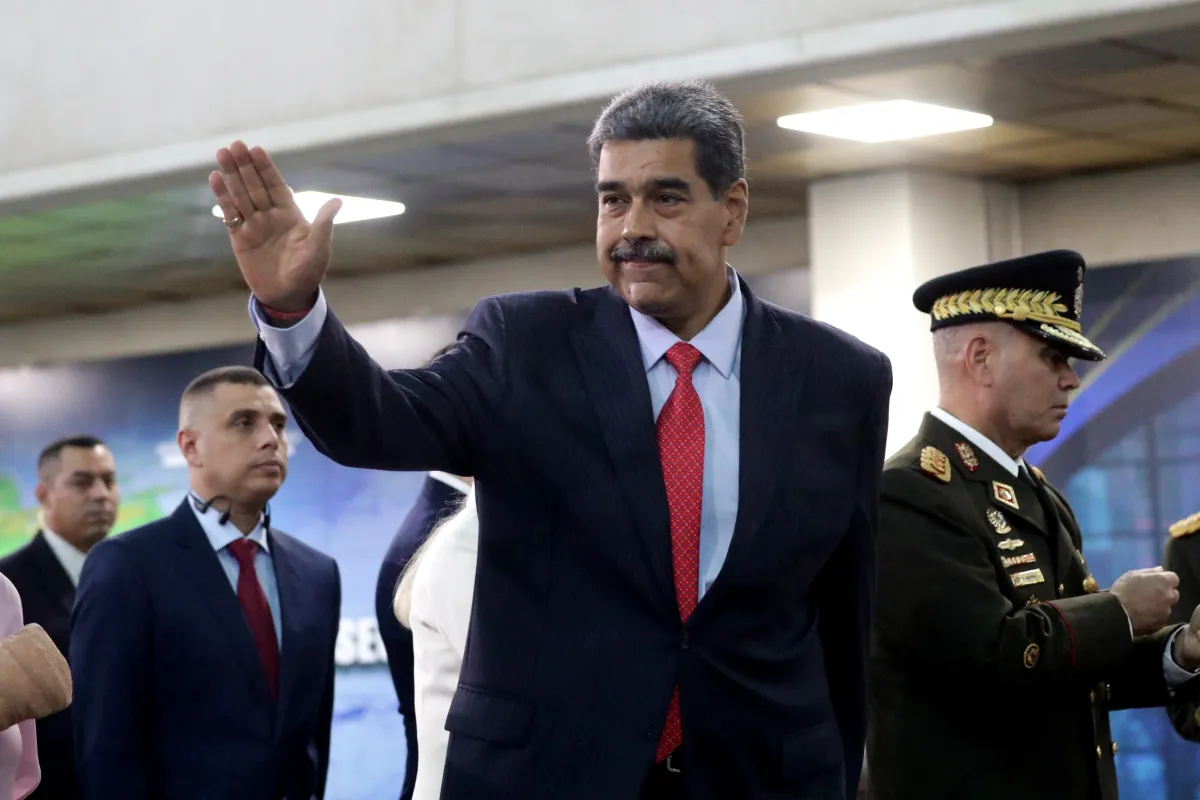
The Colombian government stated on Thursday that it would have no reason to reject a potential asylum request from Venezuelan President Nicolás Maduro should he leave office, as regional tensions persist over the deployment of U.S. military forces in the Caribbean since August.
“In the current climate of tension, negotiations are necessary, and if the United States demands a transition or political change, that is something to be assessed. If such a transition results in him (Maduro) needing to live elsewhere or seek protection, Colombia would have no reason to deny it,” said Colombian Foreign Minister Rosa Villavicencio in an interview with Caracol Radio.
However, Villavicencio noted that it is unlikely Maduro would choose Colombia as a refuge. “I believe he would opt for someplace more distant and calmer,” she added.
Colombian President Gustavo Petro also commented on Venezuela’s situation on Wednesday, arguing that the country needs a “democratic revolution” rather than “inefficient repression.” His remarks followed the recent detention and passport cancellation of Cardinal Baltazar Porras at the Caracas airport.
“The Maduro government must understand that responding to external aggression requires more than military preparations; it requires a democratic revolution. A country is defended with more democracy, not more inefficient repression,” Petro wrote on X (formerly Twitter), in a rare public criticism of the Venezuelan leader.
Petro also called for a general amnesty for political opponents and reiterated his call for forming a broad transitional government to address Venezuela’s prolonged crisis.
Since September, U.S. military forces have destroyed more than 20 vessels allegedly carrying drugs in Caribbean and Pacific waters near Venezuela and Colombia, resulting in over 80 deaths.
U.S. President Donald Trump has repeatedly warned that attacks “inside Venezuela” will begin “soon,” while Maduro has urged Venezuelans to prepare for what he describes as an impending external aggression.
-
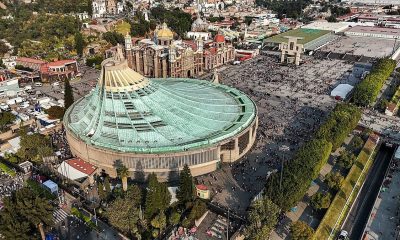
 International4 days ago
International4 days agoMexico City prepares for 13 million pilgrims at Basilica of Guadalupe
-
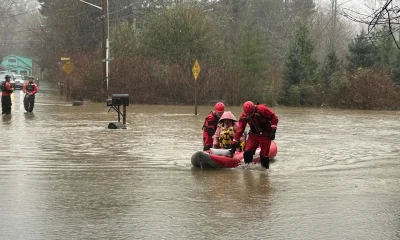
 International3 days ago
International3 days agoWashington declares State of Emergency as atmospheric river brings severe flooding
-

 International3 days ago
International3 days agoU.S. to require five-year social media history from tourists under Visa Waiver Program
-

 Central America4 days ago
Central America4 days agoHonduras’ electoral chief reports ongoing technical issues but says results remain intact
-
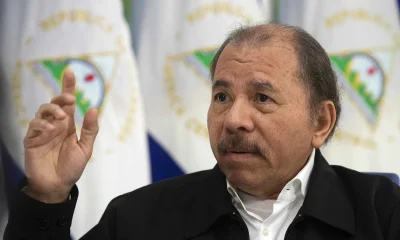
 Central America4 days ago
Central America4 days agoU.S. accuses Ortega regime of systematic human rights abuses in Nicaragua
-

 Central America4 days ago
Central America4 days agoU.S. finds no evidence of fraud in Honduras election despite delays
-
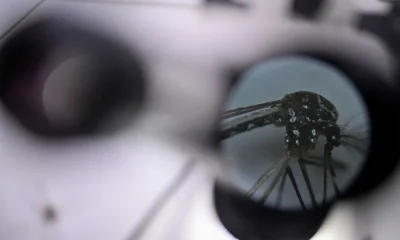
 International2 days ago
International2 days agoCuba battles out-of-control dengue and chikungunya epidemic as death toll rises to 44
-

 Central America3 days ago
Central America3 days agoOAS and EU urge honduran political actors to respect vote results and avoid unrest
-

 Central America2 days ago
Central America2 days agoHonduras election crisis deepens as CNE president denounces intimidation attempts
-
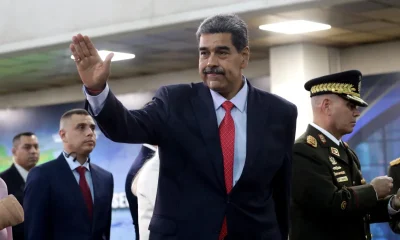
 International2 days ago
International2 days agoColombia says it would not reject Maduro asylum request as regional tensions escalate
-

 International19 hours ago
International19 hours agoSeveral people shot in attack on Brown University campus
-
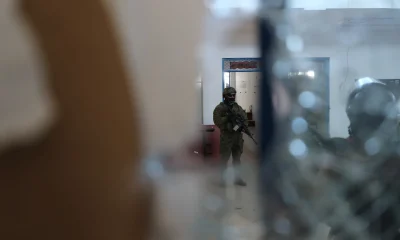
 International2 days ago
International2 days agoEcuador on track for record violence as homicides hit highest level in Latin America again
-
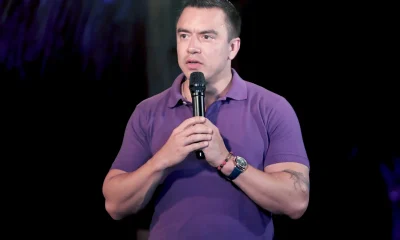
 International3 days ago
International3 days agoSix ecuadorian soldiers jailed pending trial for alleged extrajudicial execution
-

 International16 hours ago
International16 hours agoU.S. and Mexico Reach Deal to Address Water Deficit Under 1944 Treaty



































